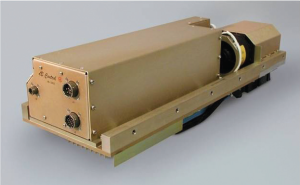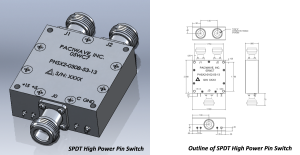What’s New with UAVs in an Uncrewed World
Unmanned aerial vehicles (UAVs) continue to transform intelligence, surveillance and reconnaissance (ISR) missions for both military and civilian applications. For example, the MQ-9 Reaper ® developed by General Atomics Aeronautical Systems (GA-ASI) is a larger, heavier, more capable aircraft than its predecessor, the MQ-1 Predator®. The Reaper is powered by a 950-shaft-horsepower (712 kW) turboprop engine – compared to the Predator’s 115 hp (86 kW) piston engine. Plus, the MQ-9 has a 66 ft (20 m) wingspan and can carry maximum payload of 3,800 lb (1,700 kg) — 15 times more than the Predator, and cruise at about three times the speed.
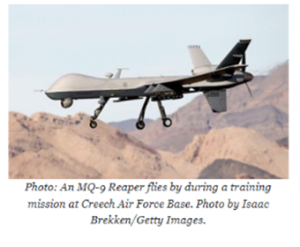
Considering that the Reaper can fly 1,000 nautical miles (1,150 miles/1,850 km) at an operational altitude of 25,000 ft (7,600 m) for over 30 hours, it is well suited for long-term loitering ISR missions. For these applications, the Reaper uses a high-resolution synthetic aperture radar (SAR) system to capture images of ground-level activities. The quality of these SAR images depends on high power travelling wave tube amplifiers (TWTAs) manufactured in the USA by dB Control.
Two other UAVs, Northrop Grumman’s RQ-4 Global Hawk® and MQ-8 Fire Scout®, also rely on dB Control’s TWTAs to power their SAR systems. The Global Hawk is a high-altitude remotely piloted aircraft that provides a broad overview and systematic surveillance. The Fire Scout is an unmanned autonomous helicopter used by the USAF to provide reconnaissance, situational awareness, aerial fire support and precision targeting support for ground, air and sea forces.
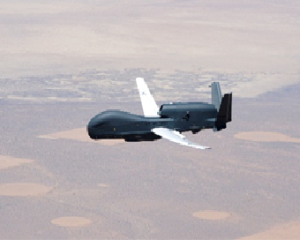
Northrop Grumman Awarded Contract to Increase Global Hawk Operational Flexibilty. Photo courtesy US Air Force.

Northrop Grumman-Built MQ-8C Fire Scout Makes Operational Deployment. Photo courtesy US Navy.
In addition to military missions, UAVs are also used within the US civilian airspace for a variety of applications, including border surveillance, wildfire fighting and disaster relief. SAR systems powered by dB Control’s reliable TWTAs have the capability of identifying the heat signature of a human body from an altitude of 10,000 feet, making them extremely useful in the search for survivors.
New UAVs transform what’s possible
As new UAVs transition their powerplants from turboprops to jet engines, extend flight hours and distances and fine tune the art of landing and taking-off from aircraft carriers, these aircraft will play a greater role than ever before for both military and civilian applications. For example, the MQ-9B SeaGuardian® manufactured by GA-ASI is revolutionizing what’s possible for UAVs. Although its development has been influenced by the more than 1,000 Predator-series multi-mission aircraft that have logged roughly 8 million operational hours, it is a wholly new aircraft.
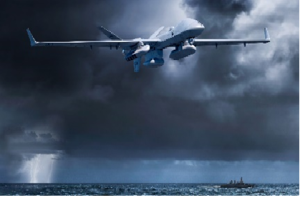
General Atomics Aeronautical MQ-9B SeaGuardian with sonobuoy dispensers. Photo courtesy GA-ASI.
According to GA-ASI, the MQ-9B SeaGuardian can provide roughly 80 percent of the capability of a large human-flown maritime patrol aircraft at about 20 percent of its cost per hour. This is because the aircraft performs with a high degree of autonomy and with human controllers who can operate it via satellite from anywhere. The SeaGuardian’s larger fuselage and longer wingspan enable it to access more bases with shorter runways than earlier models of unmanned surveillance aircraft. Plus, it is the only platform of its kind that can carry, release, and monitor sonobuoys to detect submarines and monitor them over time.
Another UAV newcomer, the MQ-25™ Stingray manufactured by The Boeing Company, will be the world’s first operational, carrier-based unmanned aircraft. The Stingray can provide aerial refueling and ISR capabilities that enhance the capability and versatility for the Navy’s Carrier Air Wing and Strike Group.
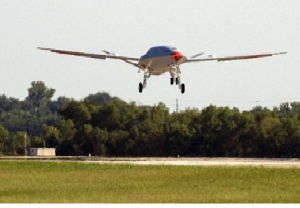
The Boeing Company’s MQ-25™ Stingray will be the world’s first operational, carrier-based unmanned aircraft. Photo courtesy of Boeing
The era of simpler UAV defense operations over land is giving way to a new chapter of multi-domain integration and a myriad of civilian applications such as wildlife conservation, ecological monitoring customs enforcement, lifesaving, and security. UAVs like the Sea Guardian and the Stingray lay the foundation for future carrier-based unmanned systems and pioneer the cutting-edge manned-unmanned teaming operational concept. As UAV capabilities expand, so will the demand for reliable, compact, power products. dB Control will continue to meet those demands with mission-critical, customizable TWTAs, MPMs and power supplies.
About the Author

Mike Lee is Vice President of Sales and Marketing at dB Control. He has more than 25 years of RF and microwave experience developing new relationships with companies whose specs require high-power TWTAs, MPMs, power supplies, contract manufacturing services or repair depot services.Prior to joining dB Control, Lee worked at Comtech Xicom Technology and IBM – where he received a U.S. Patent for his electrical circuit design. He earned a Bachelor’s of Engineering in Electrical Engineering from The City College of New York.
This article was published on 4/11/24 in RF Globalnet’s “Spotlight on UAVs” Newsletter.




